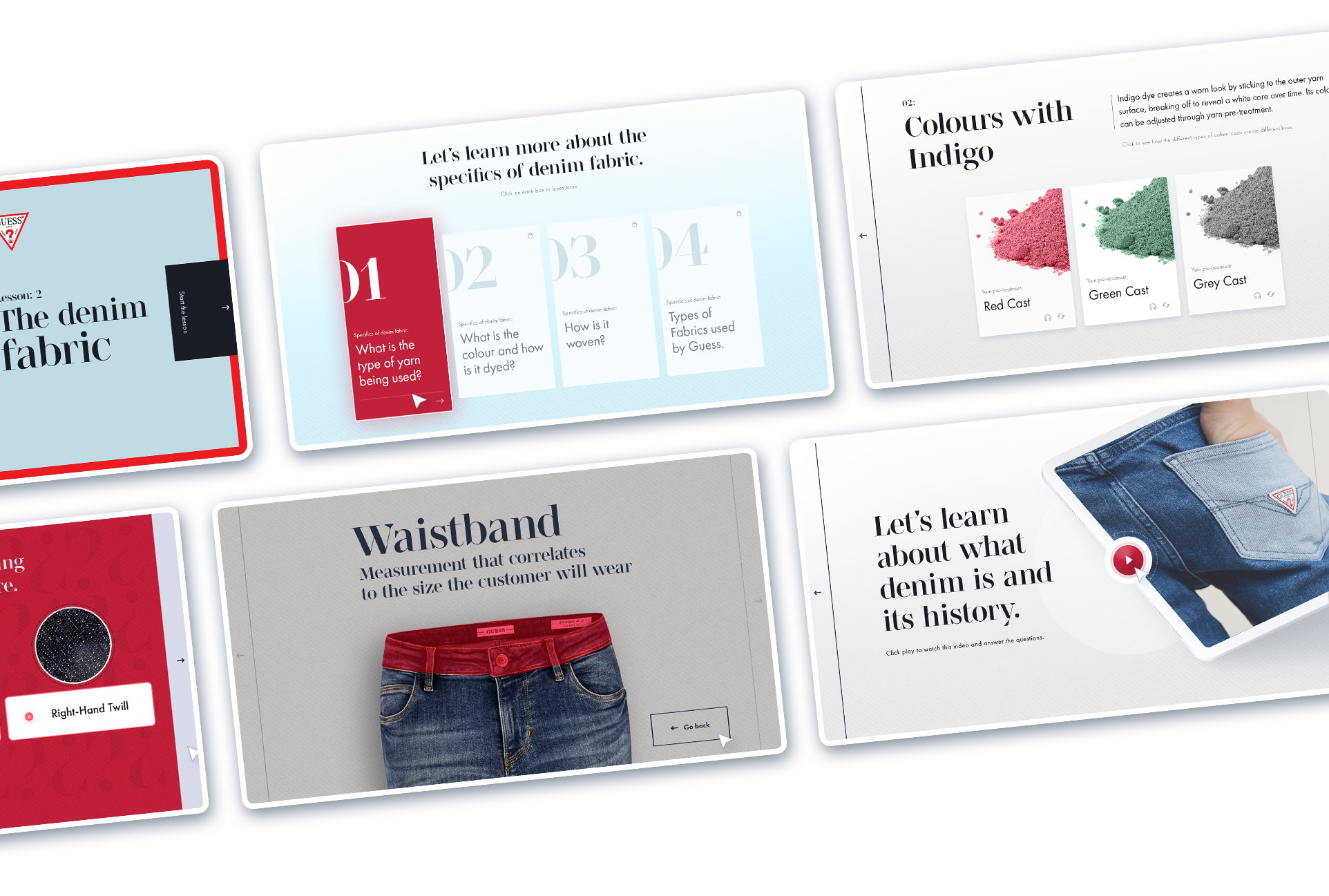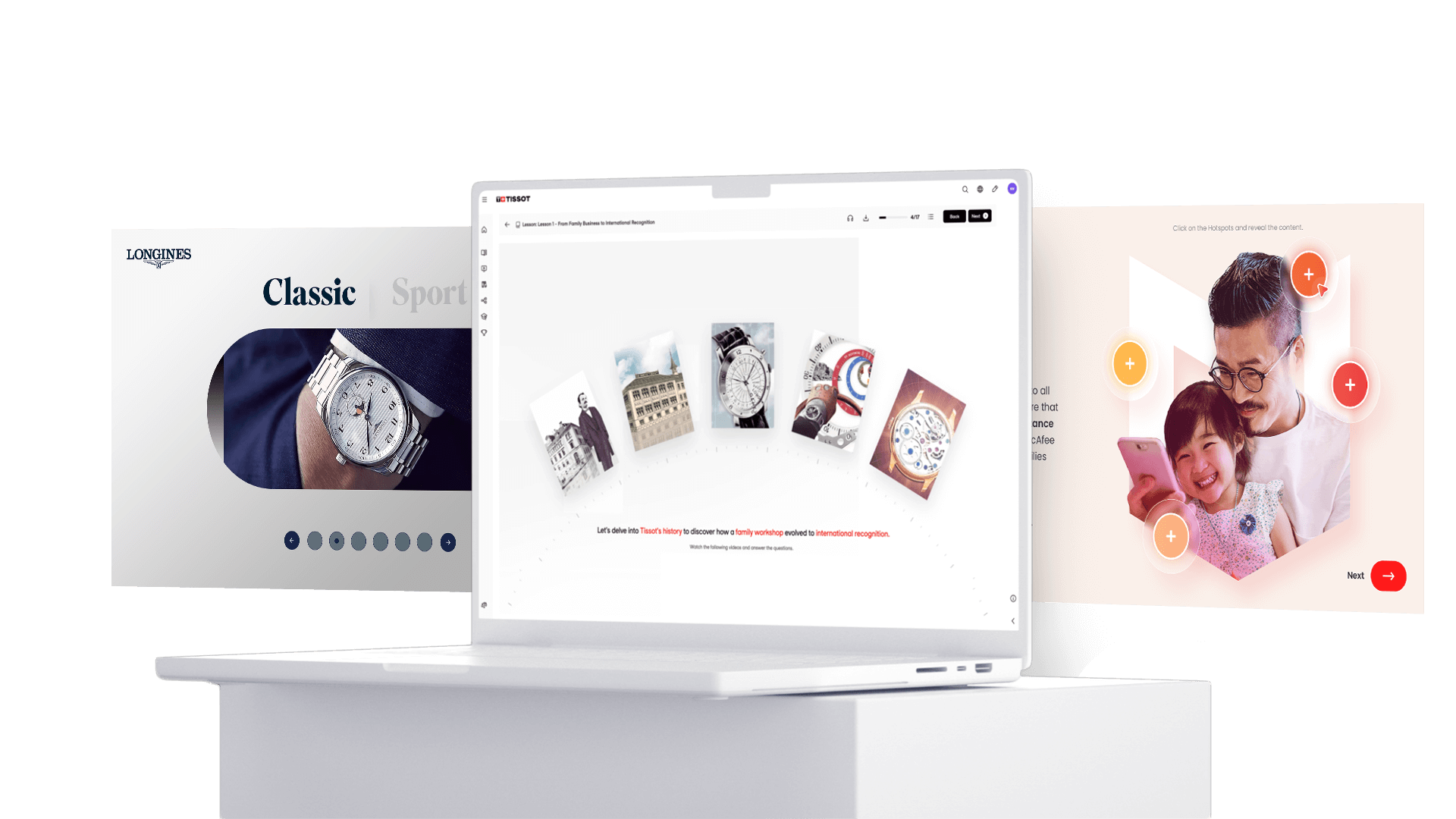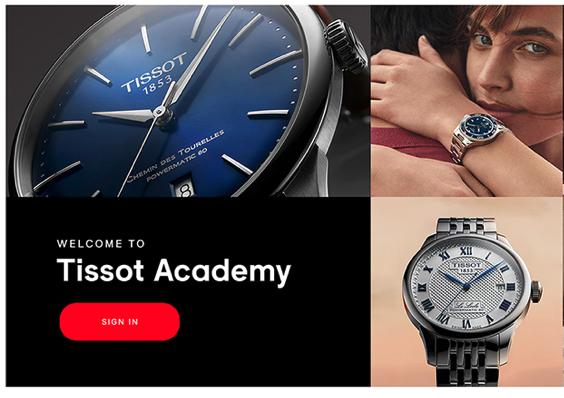Experts design tips for retail training
Ultimate Guide: eLearning Design Tips and best practices for retail training
Creating engaging online retail training involves a multi-faceted approach that incorporates various elements to captivate learners.
Start by designing a visually appealing platform that reflects the brand identity of the retail company, using consistent branding elements to create a sense of familiarity and cohesion.
Incorporate activities-based learning into the curriculum, allowing employees to actively participate in simulations, role-plays, and interactive exercises that mirror real-world scenarios they may encounter on the job.
Investing in creativity and fresh ideas is key to keeping content relevant and compelling, so encourage input from subject matter experts within the organization to lend their insights and experiences.
Publishing multimedia content such as videos, infographics, and interactive presentations enriches the learning experience, offering diverse formats to accommodate different learning styles and preferences. By giving experts a voice and leveraging multimedia content, online retail training can become not only informative but also engaging and memorable for employees.
Design Matters
Investing in perfectly designed retail training is paramount for delivering a rich and engaging learning experience that resonates with employees.
The design phase adds a new level of refinement and creativity to the course structure, fostering deeper reflection and generating innovative ideas that enhance the overall learning journey. Thoughtfully crafted design elements not only elevate the aesthetic appeal of the training materials but also significantly impact readability, hierarchisation, and clarity.
Clear visual hierarchies, intuitive navigation, and visually appealing layouts not only make the content more inviting but also facilitate comprehension and retention of crucial information. By prioritizing design in retail training, organizations can ensure that learners are not only informed but also inspired, resulting in a more memorable and impactful learning experience.
Brand exercise
Publishing a retail training, especially tailored for the fashion and luxury industries, is not just an educational endeavour; it's a strategic brand exercise.
Every aspect of the training, from the content to the presentation, serves as a reflection of the brand's values, aesthetics, and standards.
By curating training materials that embody the essence of the brand, companies in these industries can instill a sense of brand identity and culture within their employees.
A well-designed and meticulously crafted training program communicates the brand's commitment to excellence and attention to detail, aligning employees with the brand's ethos and ensuring consistent customer experiences across all touchpoints.
Therefore, investing in retail training becomes not only an investment in employee development but also a reinforcement of the brand's identity and reputation in the competitive fashion and luxury market.
Activities and Interactions
Visual and Interactive Content, Utilise multimedia elements such as videos, infographics, and interactive presentations to make your e-learning content more engaging and memorable.
Visual aids can help clarify complex concepts and keep learners interested.
Deliver a useful content
Designing a retail training program is fundamentally about providing job aids that support employees in their daily tasks and challenges.
E-learning courses should serve as practical resources that empower learners to tackle real-world scenarios effectively. Understanding the expectations and needs of retail employees is pivotal in crafting training materials that are relevant and impactful.
By addressing common pain points, offering solutions to challenges encountered on the job, and providing actionable insights, retail training becomes more than just a learning opportunity—it becomes an indispensable tool for enhancing performance and productivity in the retail environment.
Whether it's equipping sales associates with product knowledge or arming managers with leadership skills, the ultimate goal of designing retail training is to enable employees to excel in their roles and contribute to the success of the business.
Invest in creativity and ideas
When designing a retail training program for industries as dynamic and visually driven as fashion, watchmaking, and luxury, investing in creativity and ideas is paramount.
These industries thrive on innovation, aesthetics, and the ability to captivate consumers with unique experiences. By infusing training materials with creativity and fresh ideas, companies cannot only engage employees more effectively but also instill a deeper understanding of brand identity and values. Whether it's through interactive modules, visually stunning presentations, or immersive simulations, incorporating creative elements elevates the training experience, making it more memorable and impactful.
In an industry where attention to detail and aesthetics are everything, investing in creativity ensures that the training program reflects the standards of excellence synonymous with luxury brands.
Break the codes
In the realm of designing online retail training, rules are often established as guidelines to follow.
It's essential to recognise that rules are meant to be challenged, broken, and redefined to foster innovation and create truly exceptional learning experiences.
Creativity should serve as the driving force behind every project, pushing boundaries and exploring new possibilities. By daring to challenge conventional norms and embracing unconventional approaches, designers can unlock the full potential of their training programs.
Engaging learners requires more than just adhering to established practices; it demands the courage to think outside the box, experiment with novel ideas, and push the limits of what is possible.
It is through this fearless pursuit of creativity that online retail training can transcend expectations and deliver truly successful and transformative learning experiences.
Focus on Practical Application
Focusing on practical training is of paramount importance when designing online retail training.
Retail employees thrive when they can apply their learning directly to real-world situations.
E-learning modules should be meticulously crafted to incorporate hands-on experiences, realistic scenarios, and interactive simulations that mirror the challenges they encounter daily on the job.
By immersing learners in practical exercises, such as navigating customer interactions, handling inventory management, or mastering sales techniques, training becomes more relevant and immediately applicable.
Case studies offer insights into actual retail dilemmas, allowing employees to analyse problems and devise solutions in a risk-free environment. Interactive simulations provide opportunities for active participation and skill development, reinforcing learning outcomes and building confidence.
By prioritising practical training in online retail courses, organizations can equip their employees with the skills and knowledge needed to excel in the fast-paced and dynamic retail landscape.
Mobile Optimisation
Optimising retail training for mobility is crucial in today's fast-paced retail environment.
With many retail employees constantly on the move, it's imperative to ensure that e-learning platforms are easily accessible from mobile devices.
By making training materials mobile-friendly, employees can conveniently access them from their smartphones or tablets, whether they're on the sales floor assisting customers or taking a quick break.
This flexibility enables seamless integration of learning into their daily routines, maximising opportunities for skill development and knowledge acquisition.
Mobile-friendly training platforms empower employees to engage with learning content anytime, anywhere, fostering a culture of continuous learning and professional growth within the retail workforce.
Nano and Micro-Learning Modules
In the fast-paced environment of retail, adopting nano and micro-learning modules is essential for effective training.
These modules break down complex topics into bite-sized chunks that can be easily consumed during short breaks or downtime, maximizing the limited time available for training. By offering content in small, digestible portions, employees can absorb information quickly and efficiently, without feeling overwhelmed.
This approach accommodates the hectic schedules of retail employees, who often have limited time for traditional training sessions.
Moreover, nano and microlearning modules cater to diverse learning styles and preferences, allowing employees to engage with content at their own pace and convenience.
By embracing this approach, retail training becomes more accessible, flexible, and impactful, leading to improved performance and productivity on the sales floor.
Create dialogues and exchanges
Creating interaction among learners is crucial for enhancing engagement and fostering a collaborative learning environment in retail training.
From a strategic standpoint, facilitating interaction encourages active participation and knowledge sharing among learners. By incorporating open-ended questions into the course content, learners are prompted to share their opinions and insights within group chats, stimulating discussions and promoting critical thinking.
Encouraging the sharing of documents or resources allows for the creation of user-generated content (UGC), enriching the learning experience with diverse perspectives and supplementary materials. From a technical perspective, a robust Learning Management System (LMS) plays a pivotal role in facilitating learner interaction.
Advanced LMS features enable learners to not only type answers but also leave audio or video messages, promoting dynamic communication and interpersonal connections. By leveraging these interactive elements, retail training programs can cultivate a sense of community, encourage knowledge exchange, and ultimately enhance the effectiveness of learning outcomes.
Creating multimedia content for retail training
Offering a rich multimedia experience is essential for facilitating the transfer of knowledge in retail training.
Lengthy texts and complex technical schematics can be daunting for learners, hindering comprehension and retention of information.
Therefore, transforming these materials into audio formats, podcasts featuring experts' insights, and animated videos not only simplifies access to information but also makes learning more engaging and enjoyable.
By incorporating multimedia elements, learners can absorb content through multiple senses, enhancing their understanding and reinforcing key concepts. Tests and assessments play a crucial role in gauging learners' comprehension and progress.
To make these assessments more enjoyable and interactive, creative formats such as video quizzes, video assessments, or interactive videos can be utilized.
These formats not only provide immediate feedback but also add an element of fun and interactivity, motivating learners to actively participate in the learning process and facilitating knowledge transfer effectively.
Giving the experts a voice
Incorporating experts into your retail training is crucial for fostering a rich learning environment.
Engaging with experts through live discussions, interviews, video testimonials, and demonstrations of technical actions provides learners with invaluable authenticity and real-life experience.
These interactions not only enhance the credibility of the training content but also allow learners to gain insights from those who have hands-on experience and deep knowledge in the field. By witnessing real-world applications and hearing firsthand accounts, learners can better understand complex concepts, stay motivated, and apply their newfound skills more effectively in their roles.
Incorporating experts into your retail training is crucial for fostering a rich learning environment.
Engaging with experts through live discussions, interviews, video testimonials, and demonstrations of technical actions provides learners with invaluable authenticity and real-life experience.
These interactions not only enhance the credibility of the training content but also allow learners to gain insights from those who have hands-on experience and deep knowledge in the field.
To further enrich this experience, do not hesitate to organize live events where learners can interact with experts directly, engaging in questions and open discussions. Such dynamic exchanges enable learners to clarify doubts, explore topics in depth, and apply their newfound skills more effectively in their roles.
Promote Peer to Peer Training
Experts are not only external figures but also valuable members of your own team.
It is essential for new retail employees to learn directly from their experienced colleagues, as peer-to-peer learning plays a significant role in fostering a continuous learning culture within a retail brand.
This approach leverages the expertise and practical knowledge of seasoned employees, allowing new team members to gain firsthand insights and understand the nuances of their roles.
By creating an environment where knowledge is regularly shared among peers, you cultivate a collaborative and supportive workplace that continuously evolves and improves, ensuring that everyone benefits from the collective experience and skills of the team.
Support onsite training
Retail training must capitalise on the benefits of blended learning to foster a healthy and positive dynamic between onsite and online education.
On-store training provides the concrete, hands-on experience essential for grasping the practical aspects of retail operations. It allows employees to engage directly with products, customers, and real-world scenarios.
Online training complements this by reinforcing memory retention and offering valuable job aids. It also supports social learning through interactive elements like chats and forums, enabling employees to discuss and share insights, ask questions, and collaborate with peers.
By integrating both onsite and online learning, retail training programs can create a comprehensive and effective learning environment that maximizes employee development and performance.
Learning Lab, Best LMS for retail training
The Learning Lab supports all these features and strategies, ensuring a comprehensive and effective approach to retail training.
By integrating blended learning, the Learning Lab creates a dynamic environment where onsite and online education coexist harmoniously.
On-store training offers the hands-on experience necessary for understanding practical retail operations, while online modules enhance memory retention, provide valuable job aids, and facilitate social learning through chats and forums.
The Learning Lab leverages the expertise of experienced team members, promoting peer-to-peer learning and a continuous learning culture. It also organizes live events, enabling direct interaction with experts and enriching the learning experience. Overall, the Learning Lab is instrumental in developing well-rounded, knowledgeable retail employees through a multifaceted and supportive training strategy.
In conclusion, the Learning Lab is instrumental in creating a comprehensive and effective retail training program by integrating multiple strategies and features. By embracing blended learning, it harmonises onsite and online education, providing hands-on experience through on-store training and reinforcing knowledge retention with online modules.
The Learning Lab also supports social learning via interactive elements like chats and forums, fostering a collaborative environment.
It leverages the expertise of experienced team members to promote peer-to-peer learning and a culture of continuous improvement.
Live events further enhance the training experience by enabling direct interaction with experts. Through these combined efforts, the Learning Lab ensures that retail employees are well-rounded, knowledgeable, and equipped to excel in their roles.







